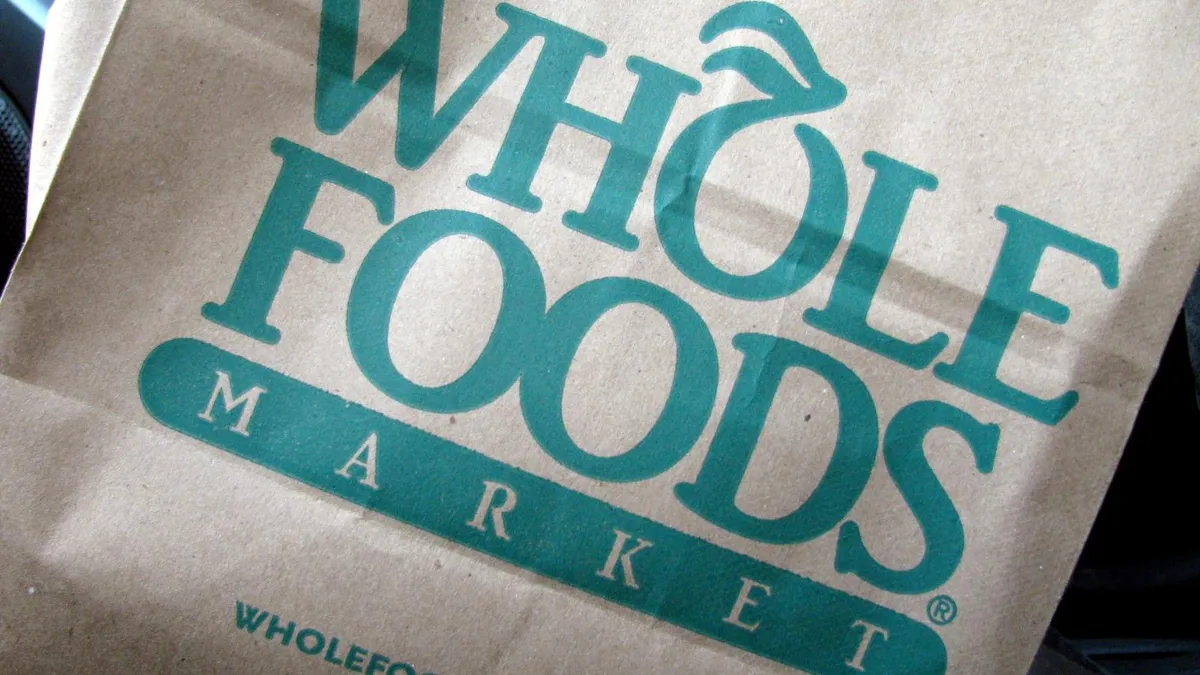Dive Brief:
- Store shelves are empty at Whole Foods locations across the country, and employees blame a new inventory-management system, says Business Insider. The order-to-shelf, or OTS, system was implemented early last year and intended to reduce unnecessary inventory and spoilage.
-
Whole Foods employees say the system is too stringent and failing to meet demand, and that managers who have excess stock are subject to warnings and even dismissal from the company.
- According to the article, customers are frustrated with so many out of stock items. Employees warn that the changes are crushing morale.
Dive Insight:
The day before a snowstorm, a grocery store could be forgiven for having empty shelves as customers arrive en masse to stock up. But for Whole Foods, the empty shelves have nothing to do with the weather.
The grocer's inventory management system, meant to precisely fill orders, was a good idea in theory. By bypassing the store room, products would reach the shelves sooner, so they’d be fresher. And, by ordering only enough to fit the shelves, stores would reduce inventory and spoilage. Whole Foods implemented the system, according to Business Insider, as part of a $300 million cost-cutting initiative.
The order-to-shelf system was implemented early last year, before the Amazon acquisition, and though other chains, like Target, have been positive about its use, the system presents significant problems for Whole Foods. This couldn’t have come at a worse time. As consumers and employees adjust to the Amazon acquisition, any negative change easily gets blamed on Amazon, regardless of the fact that the acquisition took place after the inventory system started. Although Amazon is known for its dedication to efficiency, the retailer is not known for the problems Whole Foods is experiencing: shortages, bad product quality and disorganization.
Perhaps Whole Foods' increased foot traffic under Amazon has strained the new system. Perhaps the move to centralize its buying process, cutting ties with smaller, local brands, has played a role. Whatever the reason, Whole Foods needs to revisit its system and make the necessary fixes.
So far, Whole Foods response to complaints from customers, employees and analysts about the shortage of food on shelves is that nothing in their process has changed to account for the problems. With customers quoted as saying they are frustrated and are going to shop at other stores, and employees saying morale is crushed because of the issues, Whole Food needs to be transparent about investigating and fixing the inventory issues and making amends with employees and consumers. Whole Foods had an operational problem. Now, it has public relations problem as well.








